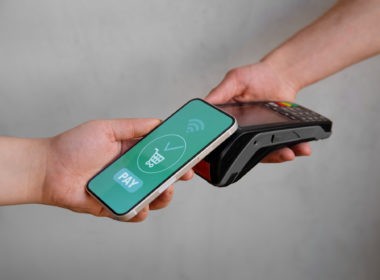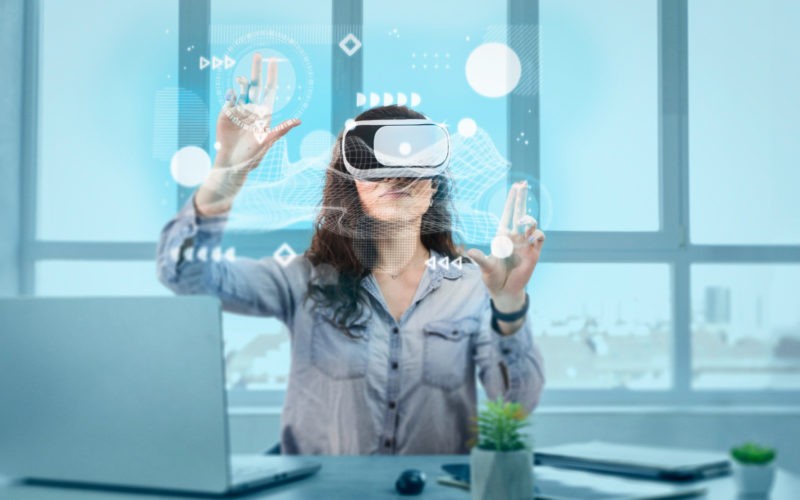Welcome to the future! It’s a place where innovation reigns and User Interface (UI) and User Experience (UX) designs are the unsung heroes. Imagine a world where your digital interactions are smoother, faster, and more intuitive. Sounds exciting, right? This article guides you on this exciting journey.
We are going to explore seven ground-breaking UI/UX trends. This lineup includes adaptive UI, voice user interfaces, and virtual reality integration. But that’s not all! We’ll also explore AI-driven experiences, biometric authentication, microinteractions, and the cool dark mode.
Join us as we unveil the trends that are transforming our digital landscape, making it more efficient and immersive. It’s a future you won’t want to miss!
Adaptive User Interfaces: Customization is Key
Our first stop is the world of adaptive UI. Ever found yourself tweaking a website’s settings to suit your preferences? That’s adaptive UI at play.
Adaptive UI is all about flexibility. It allows users to personalize their digital interactions. Users can adjust layouts, choose themes, and even alter navigation based on their preferences. This trend has gained momentum as it puts users in control of their digital environment.
Moreover, adaptive UI enhances accessibility. It makes the digital world more inclusive. Users with specific needs can tweak UI elements to ensure optimal use. It’s like a custom-tailored suit, fitting perfectly to individual needs.
From social media platforms to digital workspaces, adaptive UI is fast becoming a must-have feature. It underlines the fact that a one-size-fits-all approach doesn’t cut it anymore in the digital realm. The future of UI/UX design is custom, convenient, and client-centered. An adaptive UI is leading the charge.
AI-Powered Personalization
AI-Powered Personalization is storming the UI/UX scene. It’s reshaping how we experience digital interfaces.
In the realm of UI, AI breathes life into personalized design. It crafts interfaces that adjust to each user. Machine learning makes this possible. It grasps user preferences and tweaks the UI accordingly. Personalized icons, layouts, themes? All a part of the AI repertoire.
In the UX sphere, AI is the magic that predicts. It anticipates user behavior, streamlines navigation, and minimizes friction. How? By learning from user actions, and adapting in real-time. This step-by-step guide elaborates on how you can incorporate AI into your UX design process. The result? A tailor-made experience, designed for each user.
And it doesn’t stop there. AI offers personalized suggestions. Think Netflix recommendations or Amazon’s ‘You might also like.’ It’s the AI behind the scenes, curating based on your past actions. It’s UX that feels intuitive, almost human.
AI-Powered Personalization is the future of UI/UX. It’s the blend of technology and personal touch, creating experiences that are uniquely ours. It’s evolution, right on our screens.
Augmented Reality (AR) Integration: Adding a New Dimension to Interaction
Strap on your virtual seatbelts because our next trend, AR integration, will literally bring your UI/UX experience to life.
AR has stepped out of the realm of science fiction, finding a solid footing in the UI/UX design of today. It creates a seamless blend of digital and physical realities, leading to an immersive user experience that’s both interactive and engaging.
Take retail, for example. Brands like IKEA and Sephora are already leveraging AR to enhance their customer experience. IKEA’s AR app lets you visualize how furniture will look and fit in your space. Sephora’s ‘Virtual Artist’ lets you try on makeup virtually, making online shopping more personalized and enjoyable.
The gaming industry, too, is feeling the AR wave. Pokémon GO set the precedent, showing how AR can create a captivating gaming experience. The game lets users interact with virtual creatures in real-world settings.
In a nutshell, AR is transforming the user experience. It adds depth to the digital interface, making it more interactive and life-like. As we navigate our digital future, expect AR to play a big role in shaping our online experiences.
Voice User Interface (VUI)
Voice User Interface (VUI) is a powerful trend in the UI/UX space. It’s evolving how we interact with devices and platforms.
From a user interface (UI) perspective, Voice User Interface (VUI) is revolutionizing the way we interact with technology. The traditional ‘touch and type’ model is giving way to a more modern ‘speak and listen’ paradigm. Recent research conducted by UpCity indicates that half of all U.S. consumers utilize voice search on a daily basis. This signifies a significant transition: we are moving from tangible, screen-based interactions to intangible, voice-enabled ones.
As for UX, VUI is about ease and intuitiveness. There’s nothing more natural than using our voice. The learning curve? Practically non-existent. User satisfaction is soaring. After all, why tap when you can talk?
But it’s not just about convenience. VUI is a boon for inclusive design, which is central to UX. By catering to users with visual impairments or motor disabilities, VUI ensures that technology becomes more accessible.
Even in cars, VUI is optimizing UX. Voice controls replace touch screens, reducing distractions and promoting safety. It’s UX design that puts the user’s well-being first.
In summary, VUI represents a leap in the UI/UX field. It’s about simplifying interactions and enhancing user satisfaction. It’s turning the futuristic vision of voice-controlled technology into an accessible, inclusive reality. Watch this space!
Virtual Reality (VR) Interfaces
Virtual Reality (VR) Interfaces are rewriting the rules of UI/UX design. They’re breaking boundaries, taking us into an immersive digital realm.
In terms of UI, VR is transformative. Traditional flat screens are replaced by 360-degree visual spaces. We’re no longer just looking at interfaces; we’re inside them. Menus, buttons, controls – they all exist within this 3D space. It’s UI design on a whole new scale.
The UX impact? Revolutionary. VR offers fully immersive experiences. Users aren’t just observers; they’re participants. Navigation means moving within a virtual world and manipulating virtual objects. This interaction level is unmatched in traditional interfaces.
Moreover, VR is birthing new design concepts. Consider spatial UI, where interface elements exist within a three-dimensional space. Or gaze-based interaction, where looking at a spot triggers an action.
VR Interfaces are the frontier of UI/UX innovation. They’re creating a shift from passive interaction to immersive exploration. It’s a giant leap into the future of user experience.
Biometric Authentication
Biometric Authentication is gaining ground in UI/UX design. It’s accelerating security, making experiences faster and safer.
In the UI sphere, biometrics brings simplification. Traditional passwords and pins give way to fingerprints, face recognition, and voice commands. It’s an interface that leverages our unique physical traits.
The UX outcome? Speed and security. Biometrics offers quick, seamless access. A single touch, a brief glance, and you’re in. No more forgetting passwords, no more tedious typing. Plus, it’s far more secure. After all, fingerprints and facial patterns are much harder to fake.
Particularly in banking and finance apps, biometrics are a boon. Quick transactions, secure payments – it’s a UX designed for trust. It minimizes fraud risks, all while keeping user convenience in mind.
Biometric Authentication is redefining the UI/UX landscape. It’s turning biological traits into digital keys, making secure access a breeze. It’s a UI/UX trend to watch as we march toward a safer digital future.
Microinteractions
Microinteractions are emerging as heroes in UI/UX design. They’re small, yet mighty, shaping experiences one interaction at a time.
On the UI side, microinteractions are tiny design elements. They’re the ‘like’ animations on social media, the ‘pull to refresh’ gesture on your email app. They might be small, but their impact is significant.
UX-wise, microinteractions are the unsung heroes. They offer subtle guidance, provide real-time feedback, and even celebrate user actions. A loading animation gives you a sense of progress. A subtle vibration confirms your command. A playful animation rewards an action.
Their magic? They make the user experience tangible and relatable. They provide a sense of control, a feeling of accomplishment. They make the digital world feel a little more human.
Microinteractions are the fine details in UI/UX design. They’re elevating experiences, making them more engaging, and more rewarding. They’re the small wonders creating big waves in the user experience. Watch out for their rise.
Conclusion
In conclusion, the world of UI/UX design is experiencing a seismic shift.
VR is immersing us in new digital realities, while Biometric Authentication provides swift, foolproof security. Even the smallest details of user interactions are increasing engagement.
These aren’t mere trends but drivers of a UI/UX revolution. They’re innovating and humanizing digital interactions, creating intuitive, inclusive, and immersive experiences. It’s clear – the future of human-computer interaction isn’t just about aesthetics; it’s about evolution and limitless potential. The journey into the digital future is just getting started. Stay tuned!
⸻ Author Bio ⸻

Karena is a Content Strategist and Writer at The Stevens Saga with over five years in the SEO and digital marketing industry. Known for delivering innovative SEO strategies and exploring fresh digital trends, she offers a unique, engaging experience in the digital landscape.












